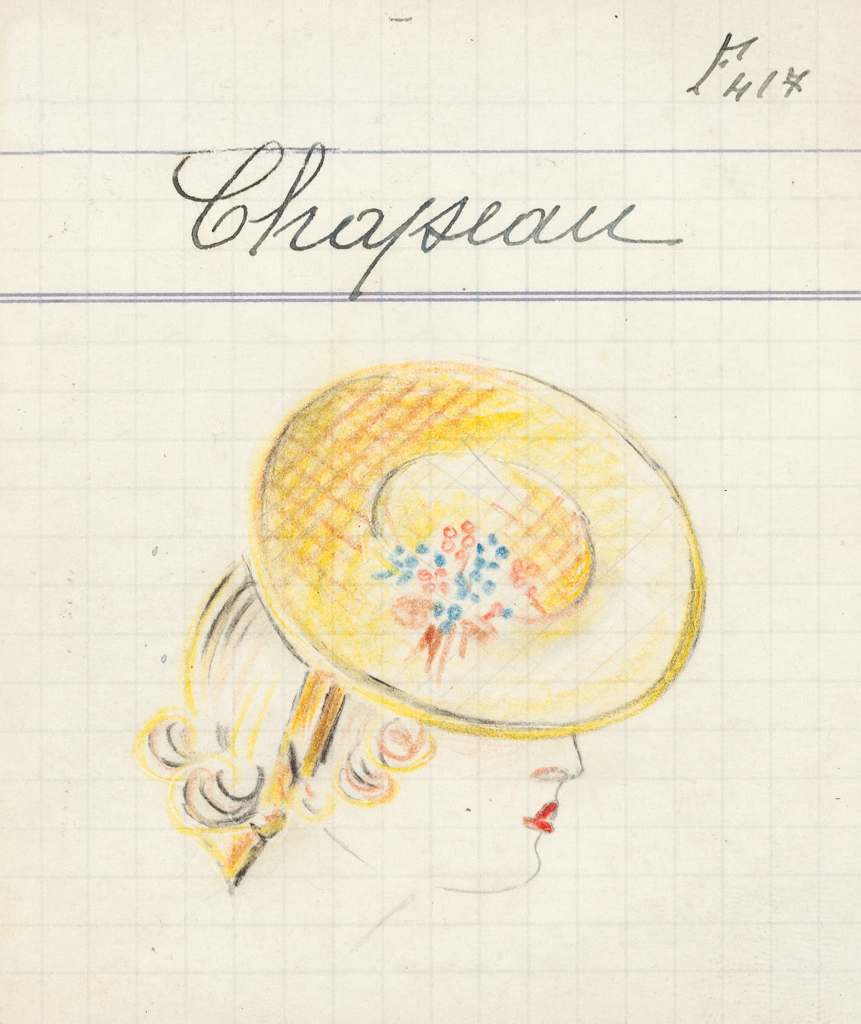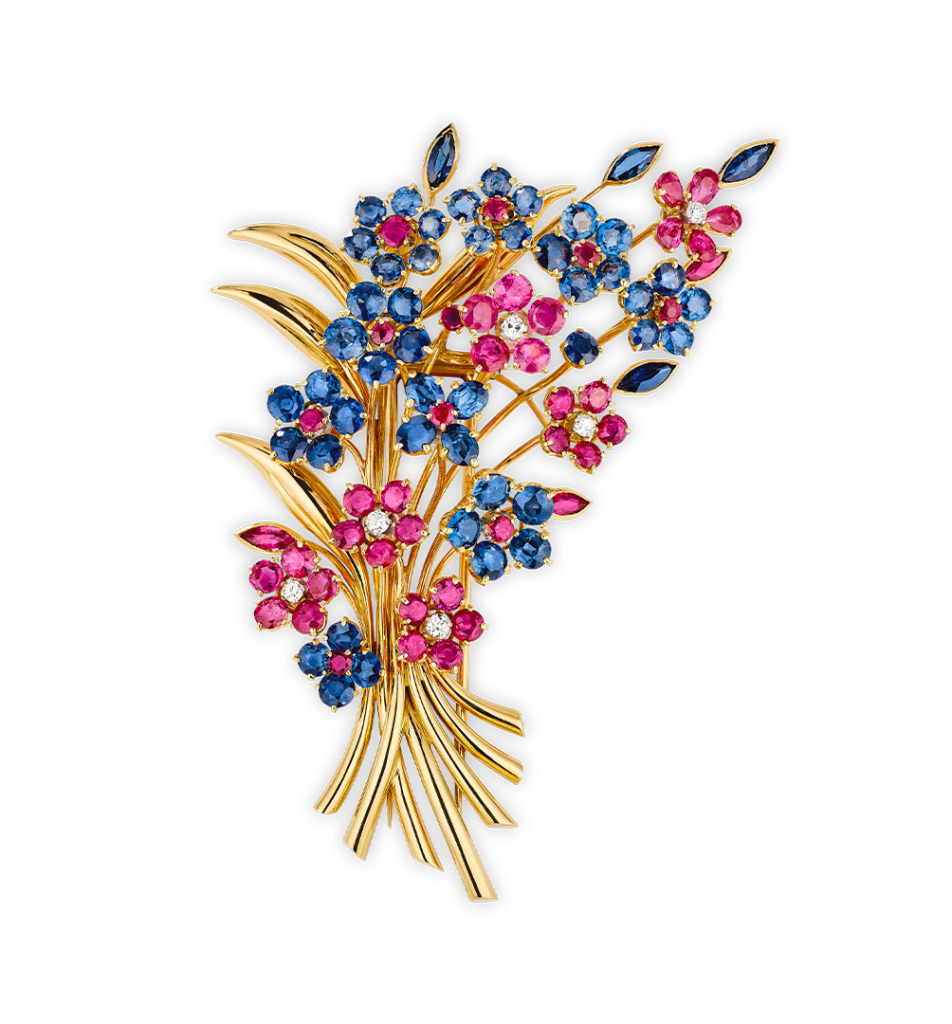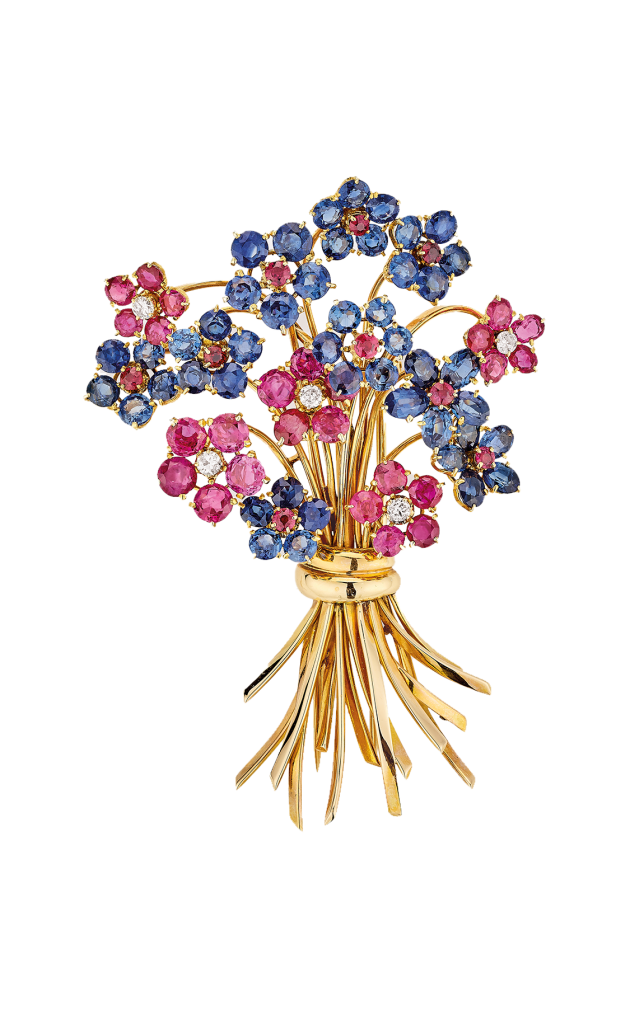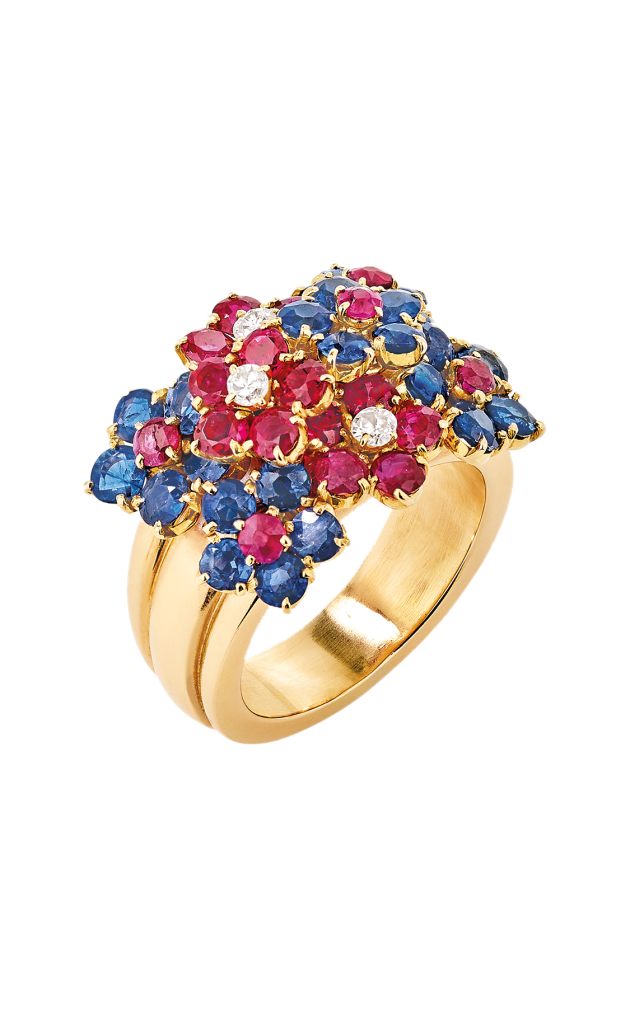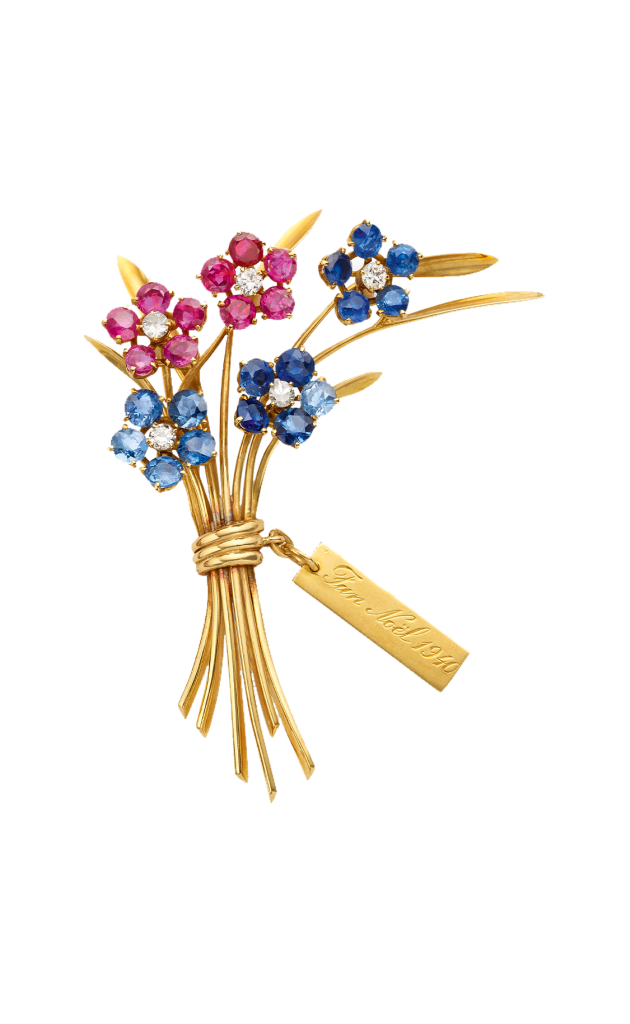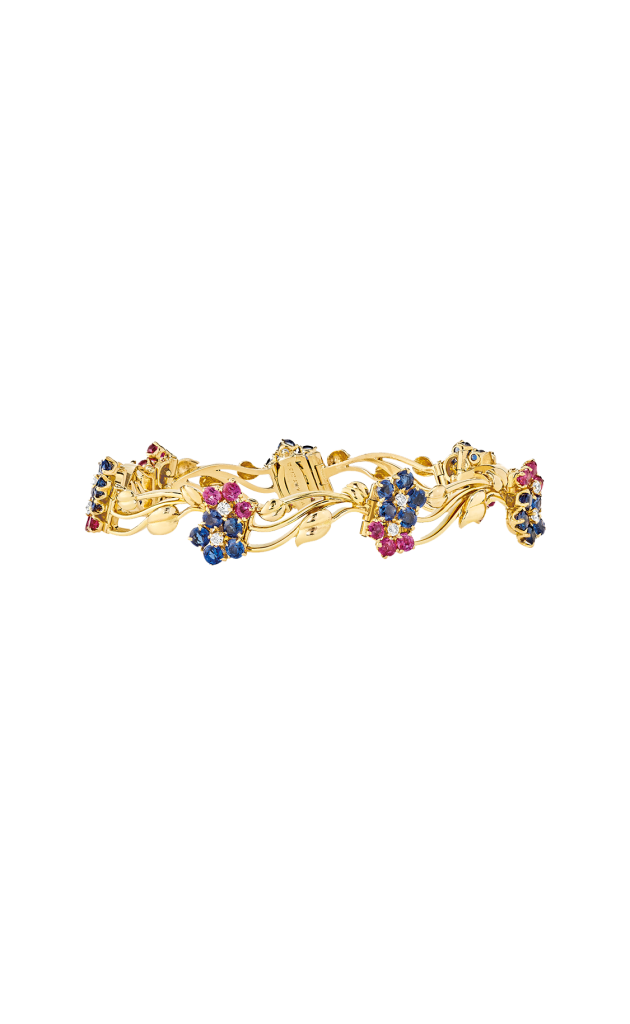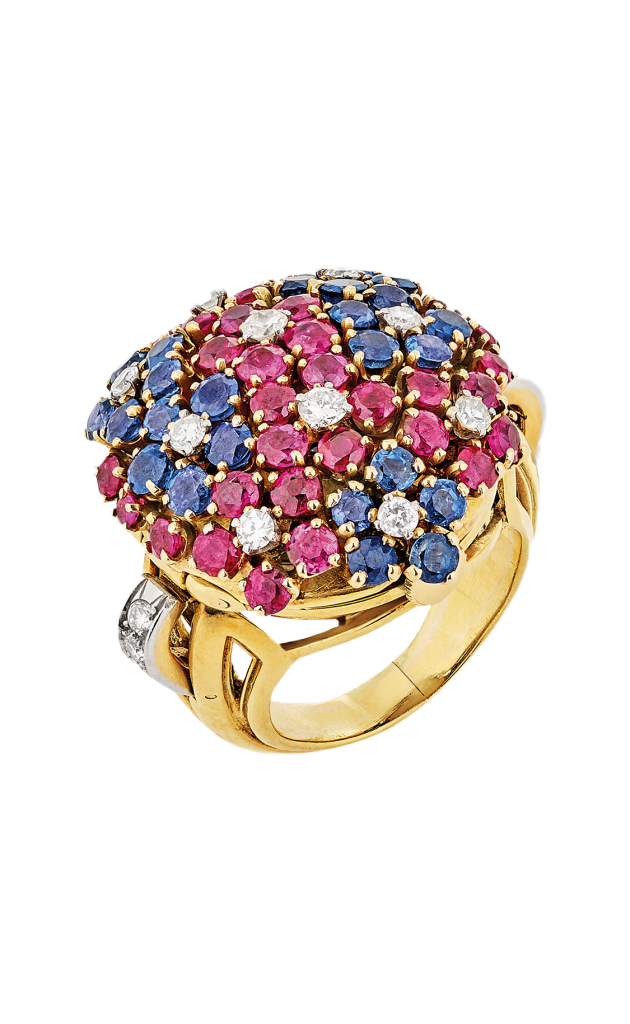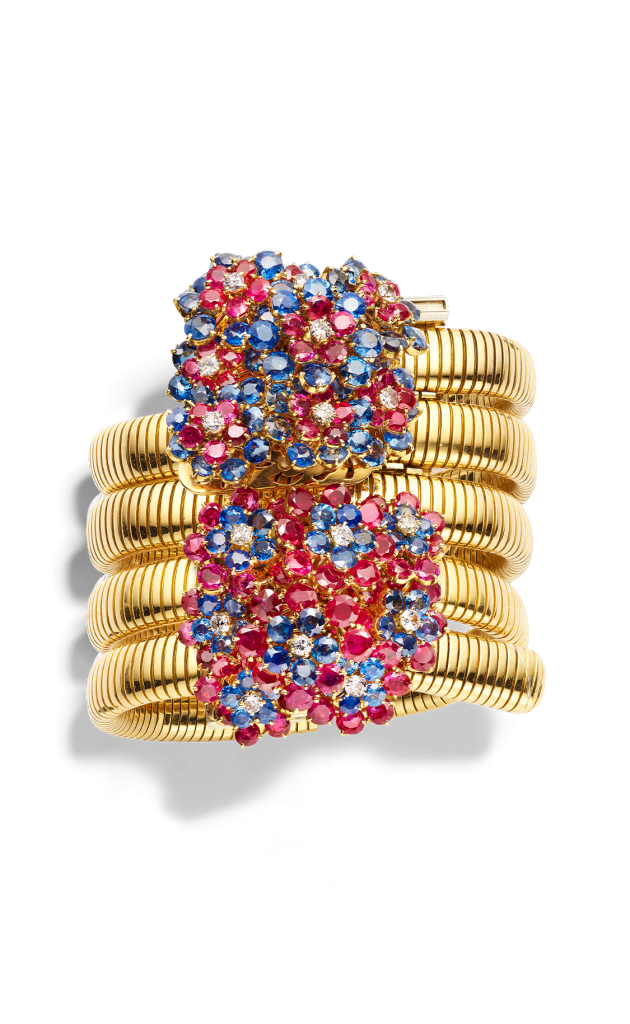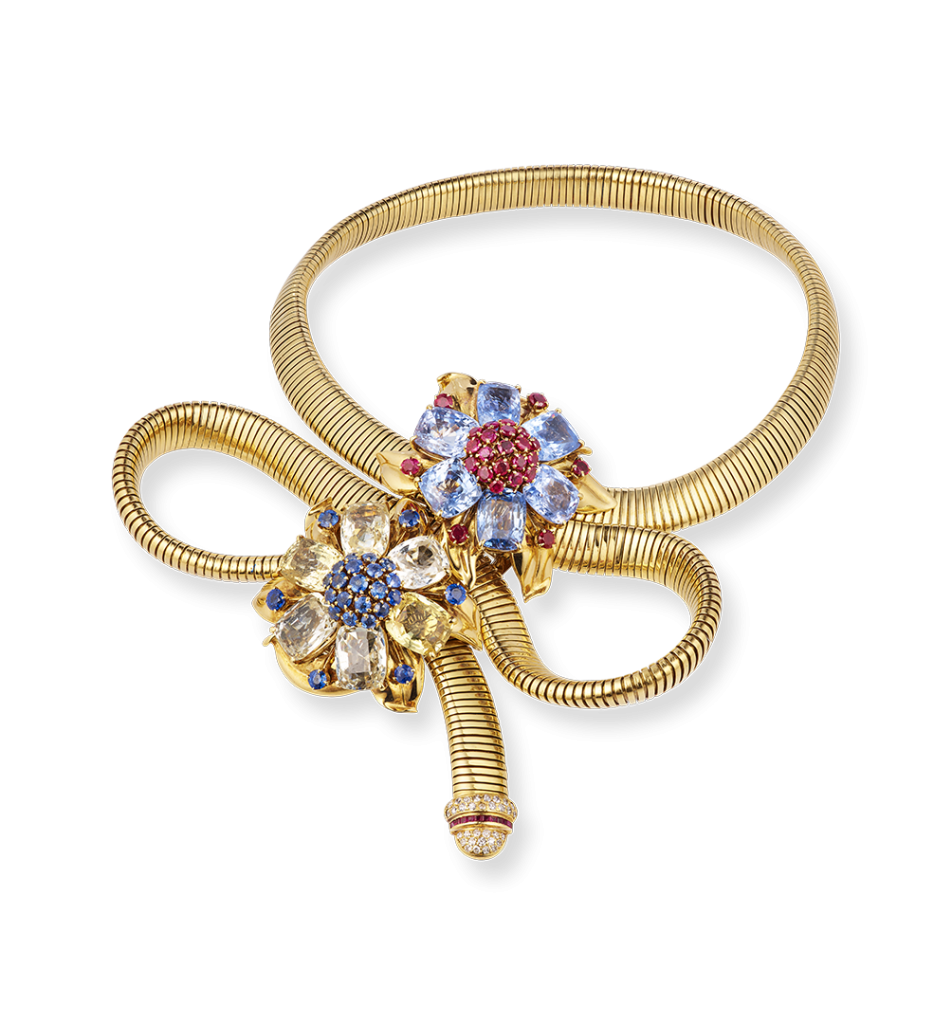The 1939 World’s Fair in New York was the second time that Van Cleef & Arpels participated in an event organized on the other side of the Atlantic, reinforcing the strategic interest in the United States shown by the Arpels family since the late 1920s.
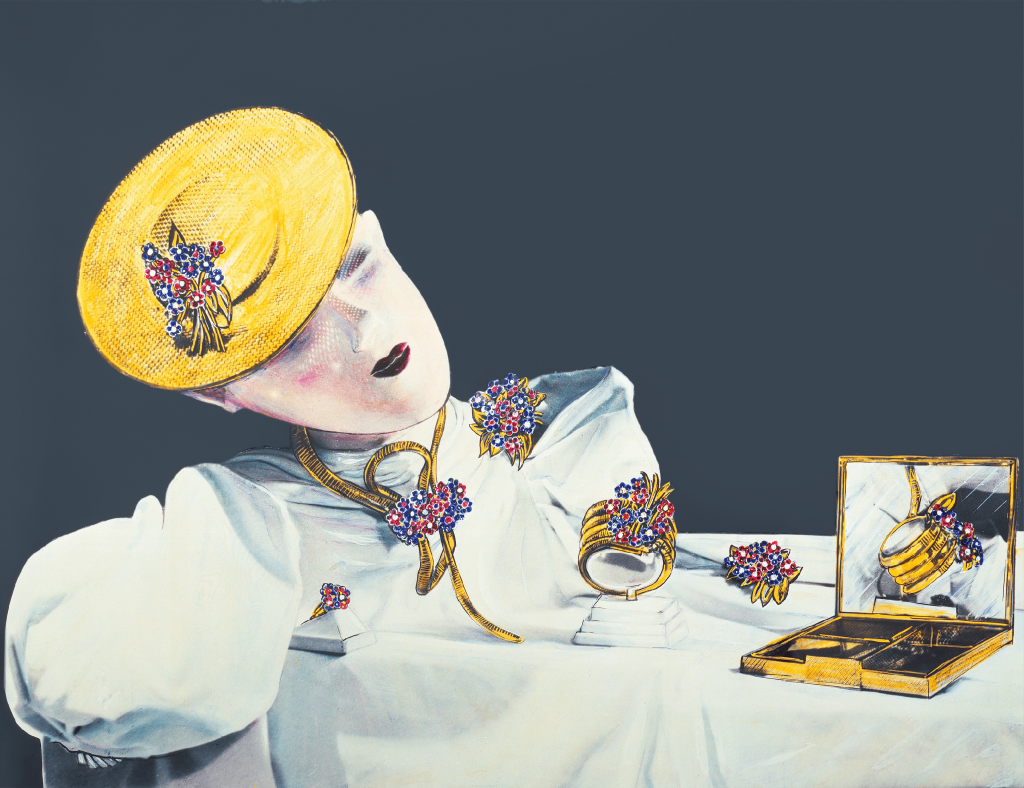
In keeping with the 1937 Exposition
Parisian jewelers presented their creations to the American public in the French Pavilion from April 1939 to October 1940.
The attention given to the arrangement of the Van Cleef & Arpels stand reflected the international importance of the event. Some of the pieces on show had already been presented at the Paris Exposition universelle in 1937. In the center of the display window lay an open Minaudière, while a mystery set bracelet featured on the far right. Both pieces reaffirmed the Maison’s creativity and innovative strength. They were accompanied by a diamond collaret, the stand’s only piece of evening jewelry, but by no means the least significant.
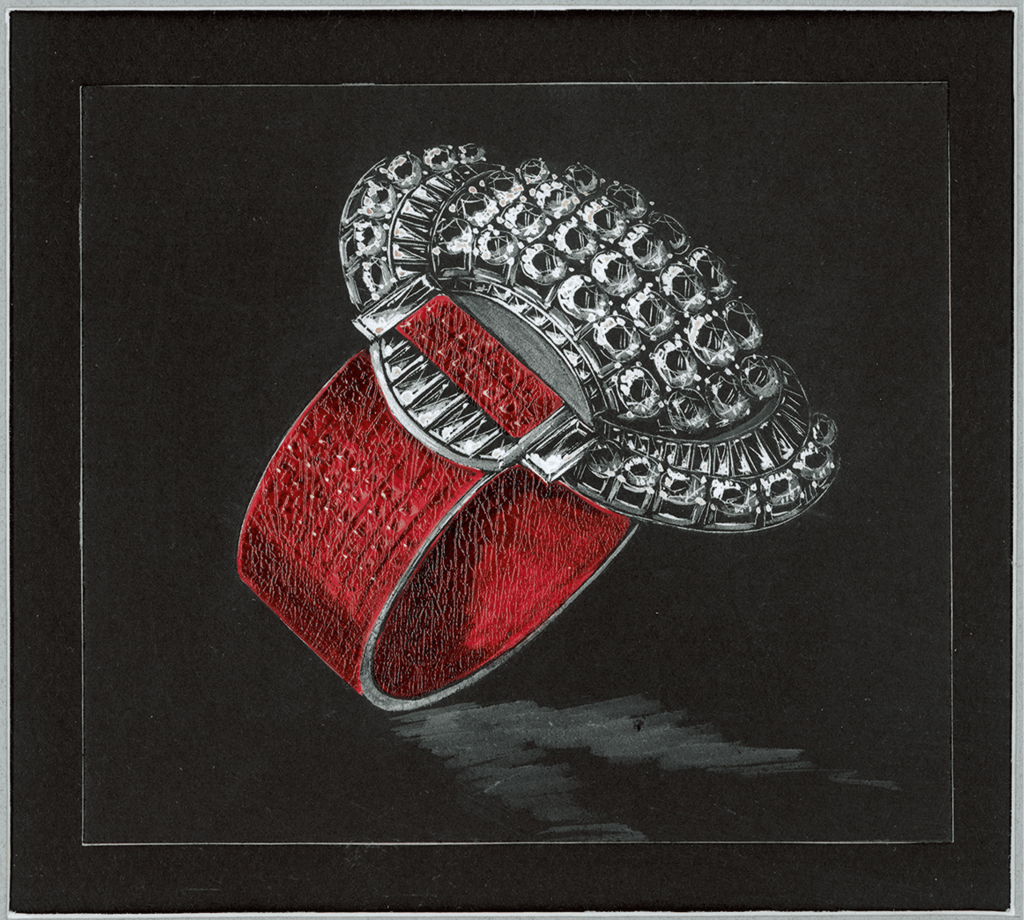
The embodiement of French elegance in New York
This stand, “specially designed for the New York World’s Fair,”1Van Cleef & Arpels advertisement, Vogue Paris (June 1939): 30. differed in its use of a mannequin to showcase the creations when worn. This staging effect had been used by other Maisons at the 1925 Exposition but had not found much success within the corporation as a whole.2We are referring here, among others, to Cartier’s use of a mannequin for the 1925 Exposition internationale.
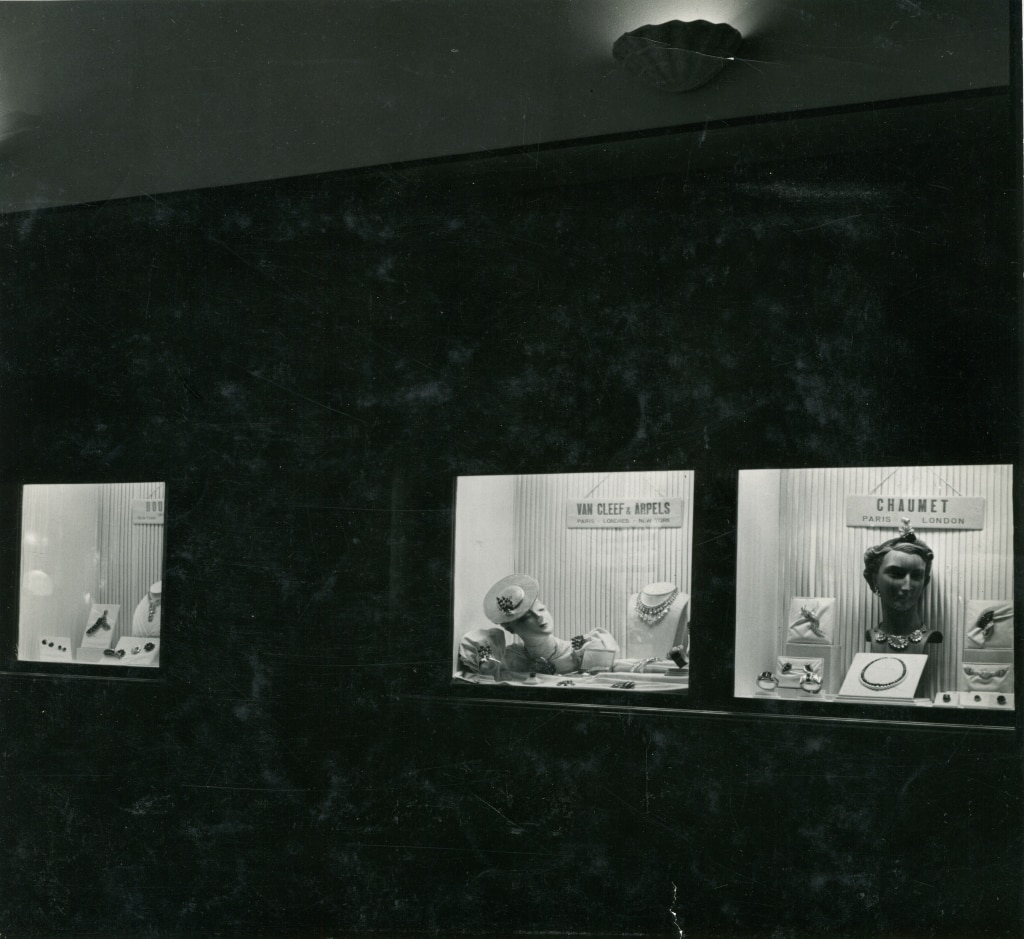
The mannequin’s chest sports a white bodice with a draped neckline adorns with small tricolor flowers typical of the Hawaii range of jewels. A Hawaii Bouquet brooch is pinned to the shoulder, while another decorates a hat made of enameled yellow gold threads imitating woven fabric. A Passe-Partout necklace is laced around the neck, forming a loose bow held in place by a Hawaii double clip, displaying the Maison’s two latest designs to great effect.
In order to show the many different ways of wearing a Passe-Partout, a second example of it is presented, this time in bracelet form, while a Hawaii ring demonstrates the range of forms used in the Hawaii collection. The use of a mannequin therefore enables a traditional jewelry set, composed of brooches, ring, and necklace, to be presented and worn in different ways. To international visitors, especially Americans, “the lady with the golden hat” embodies “Parisian elegance that emanated from every piece of Van Cleef & Arpels jewelry.”3Van Cleef & Arpels advertisement, Society Pictorial (February 1941). This large-scale presentation sanctioned the arrival of Louis, Jules, and Charles Arpels in New York, consolidated by the opening of an office in the Rockefeller Center barely two months earlier.
